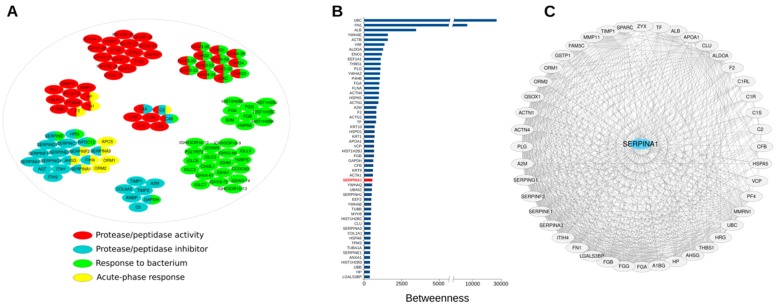Figure 1.
(A) Proteins secreted by human Adipose-Derived Mesenchymal Stem/Stromal Cells (AD-MSCs) and grouped in four functional categories including protease/peptidase activity, protease/peptidase inhibitor activity, response to bacteria, and acute-phase response (see Table S1); in addition, proteins belonging to a functional category were further split, where possible, by protein families. (B) Topological evaluation of the network (290 nodes and 3836 interactions) reconstructed by combining proteins secreted by human AD-MSCs and Homo sapiens protein-protein interaction (PPI) data [7]. Proteins in the graph showed betweenness, centroid, and degree values above the average calculated on the whole network, thus are considered hubs; the complete list (290 proteins) and the corresponding topological parameters (betweenness, centroid, and degree) are shown in Table S2. (C) Proteins secreted by human AD-MSCs experimentally identified [7] and annotated as SERPINA1 interactors.

